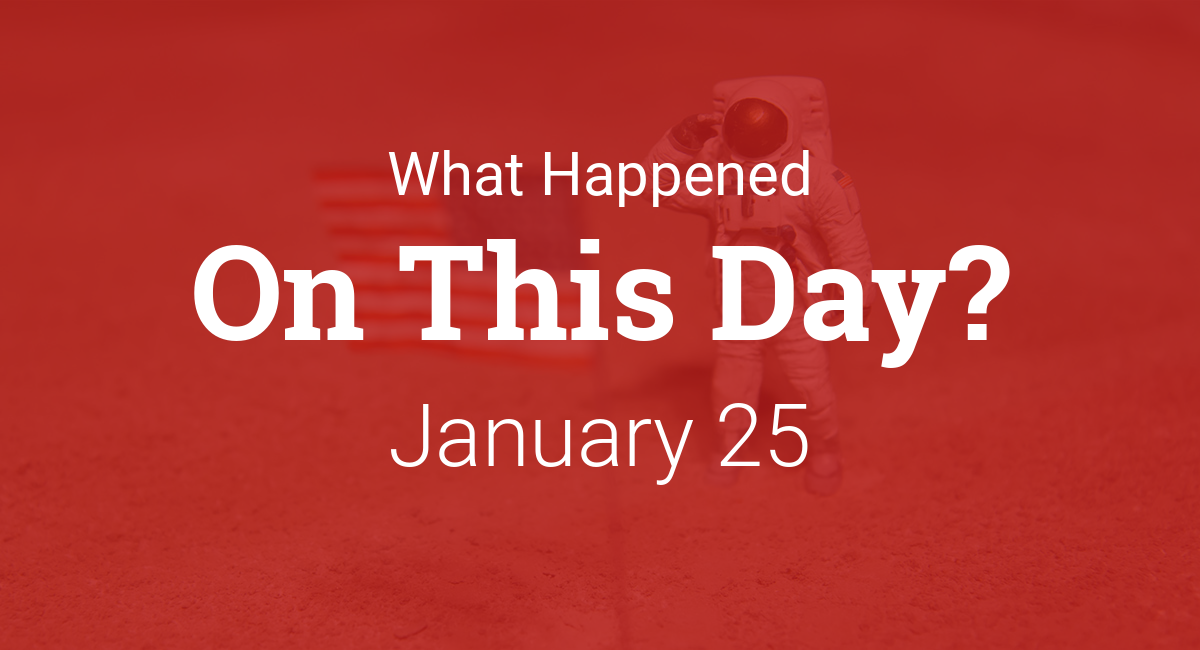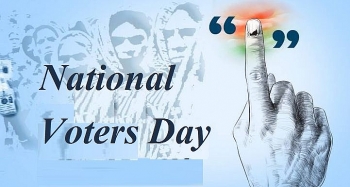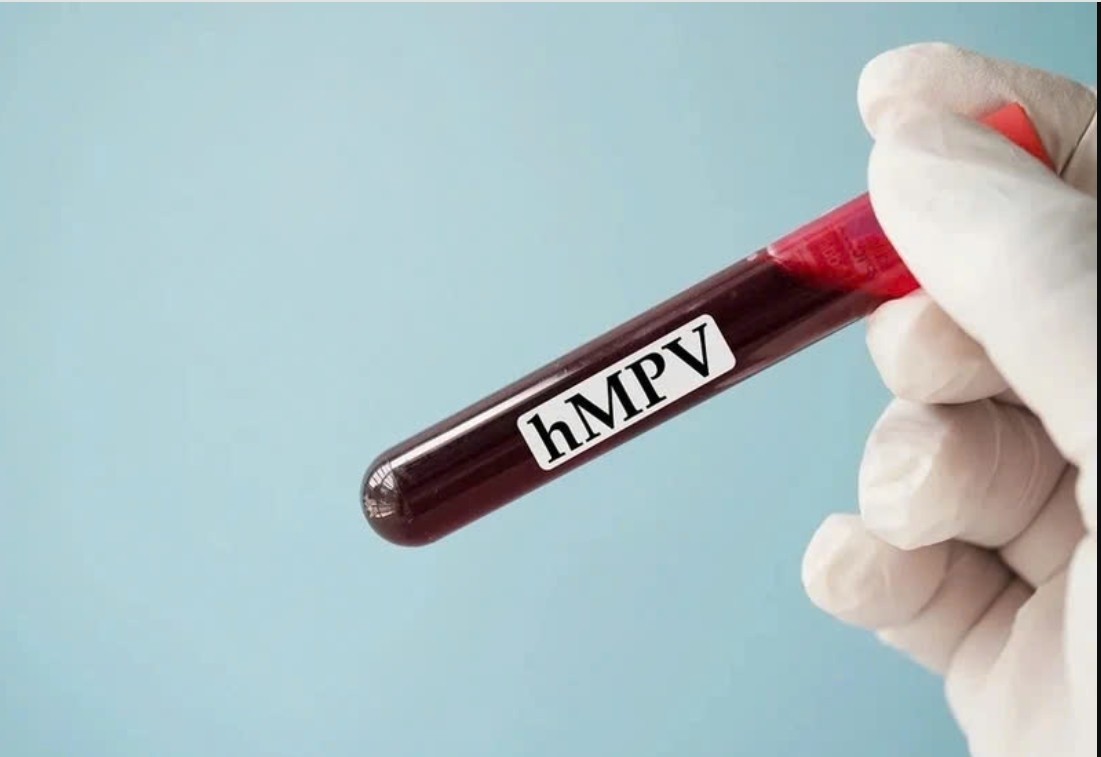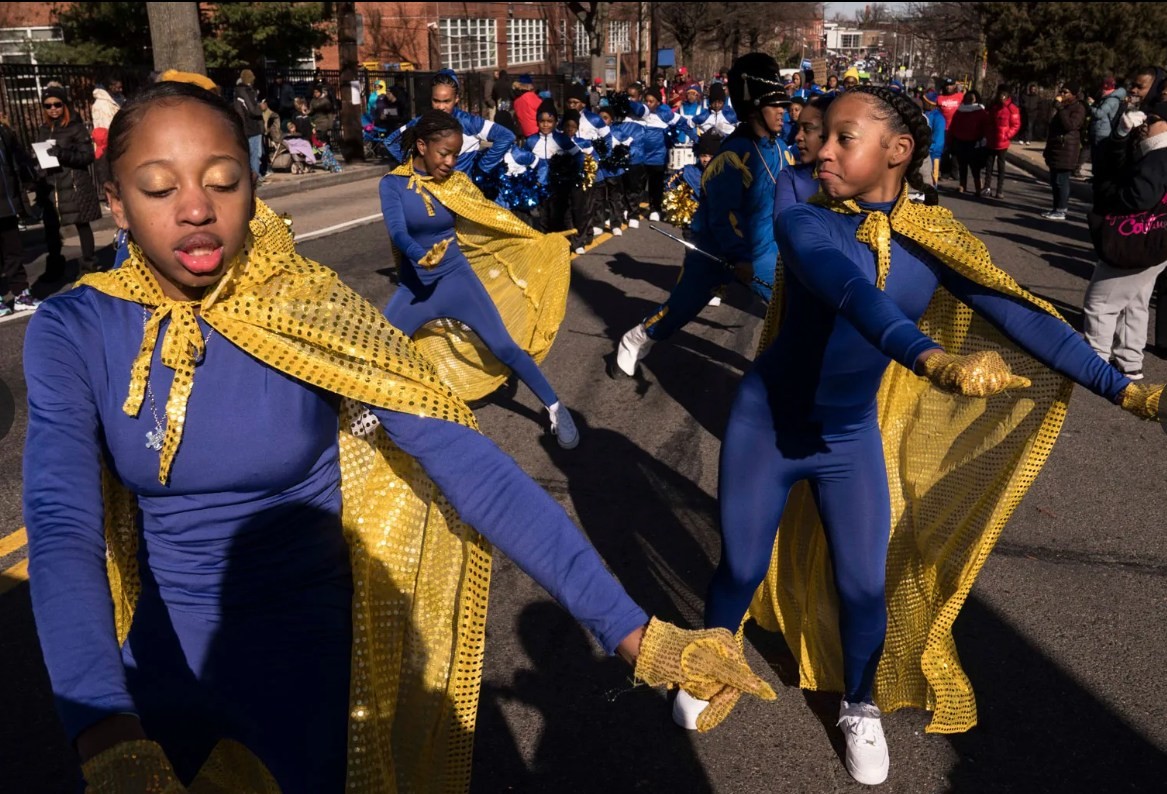What is Republic Day of India: Major changes in parade, Debut aircraft and Avoid routes
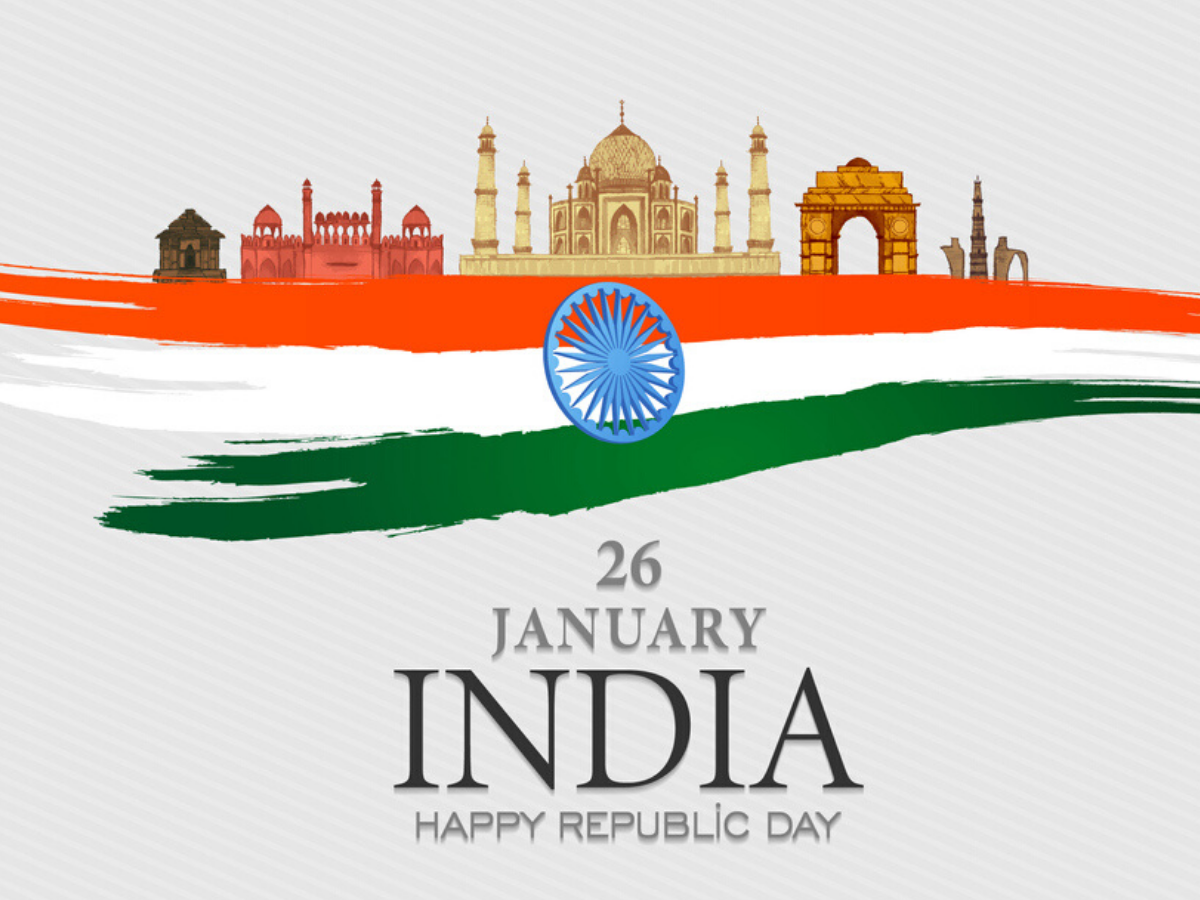 |
| Republic Day of India falls on January 26th. Photo: Times of India |
For the second year in a row, Republic Day celebrations in the national capital will be held under the shadow of raging protests against laws passed by the Centre. In 2020, it was the agitation against the Citizenship Amendment Act (CAA). This time, thousands of farmers, mostly from Punjab and Haryana, have been camping at the borders of Delhi for more than two months, demanding the Centre repeal the three farm laws. This year’s Republic Day parade will also be the first major public event in pandemic times.
What is Republic Day and History?
Republic Day is celebrated on January 26 every year to remember the day when the Constitution of India came into effect. India was ruled by the British for over 200 years. India gained independence from the rule of the British Raj after a very long freedom struggle. Though India got its independence on August 14th, 1947, the constitution came into effect on January 26th, 1950, according to India Today.
Significance of Republic Day
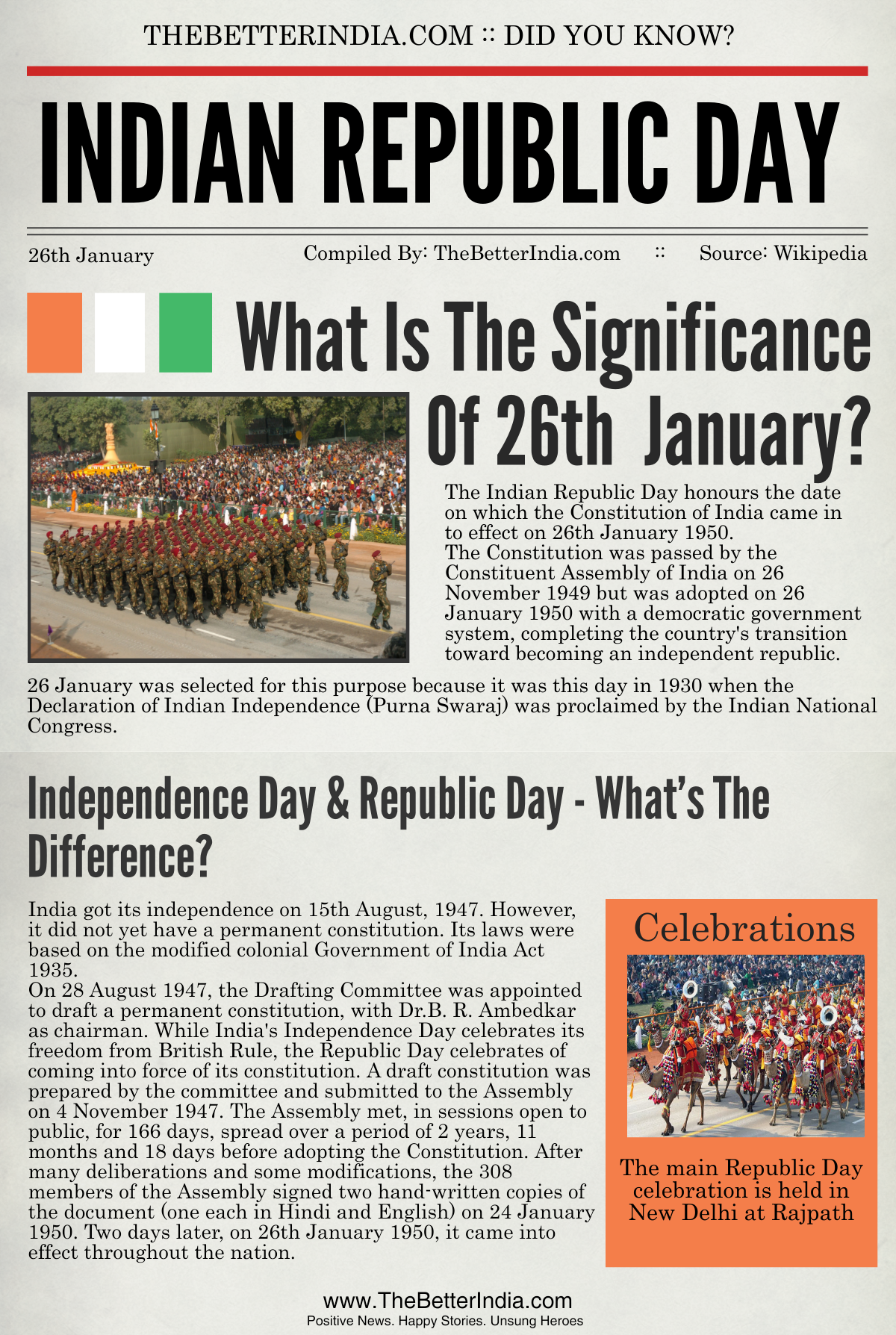 |
| Photo: The Better India |
After attaining independence from British rule, the new constitution was enrolled by the drafting committee under the deanship of Dr. BR Ambedkar. The Indian Constitution came into effect on 26 January 1950, which declared India’s occurrence as an independent republic. January 26th was chosen as the date because on this day in 1930, the Indian National Congress revealed Purna Swaraj, the declaration of India’s independence from colonial rule, says Times of India.
Republic Day signifies the right spirit of Independent and individual India. The important symbols of the festival include the exhibition of military equipment, the national flag and military equipment.
What will be new this year?
No chief guest
This will be the first Republic Day parade without a chief guest in more than fifty years. British Prime Minister Boris Johnson had canceled his visit due to the rapid rise of Covid-19 cases in the United Kingdom, Live Mint cites.
Major Changes in Republic Day 2021 Parade
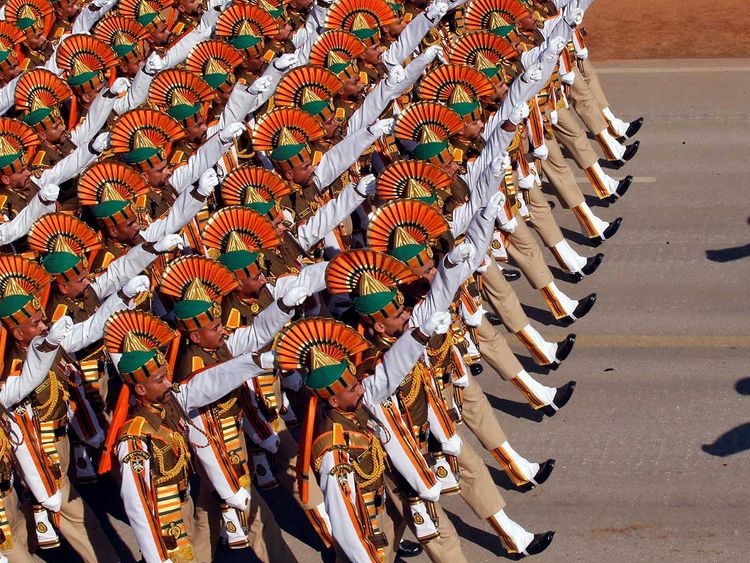 |
| Photo: Gulf News |
The government has decided to downgrade the scale of the parade. This year, only 25,000 spectators will witness the Republic Day parade. Last year, 150,000 spectators were allowed. The route of the parade has also been shortened and the contingents will move up to the National stadium only. Earlier, the parade used to march up to the Red Fort. The veteran marching contingent or tableaux will not be present this year and no child below the age of 15 will take part in the parade.
Social distancing
The spectators will watch and notice various new things. Jawans will be seen wearing masks. Social-distancing will be in place for those coming to watch the celebrations.
Rafale’s Republic Day debut
According to Indian Air Force, the newly inducted Rafale fighter aircraft will feature in the Republic Day parade and culminate the flypast by carrying out the 'Vertical Charlie' formation. A total of 38 Indian Air Force (IAF) aircraft and four planes of the Indian Army will participate in the flypast.
First woman fighter pilot to participate in the parade
Flight lieutenant Bhawana Kanth will become the first woman fighter pilot to participate in the parade. The 28-year-old will be a part of the Indian Air Force (IAF)'s tableau.
UP tableau to feature Ram Temple
Uttar Pradesh's tableau will feature a replica of the Ram Temple in Ayodhya, which is currently under construction. It will also display the culture, tradition and art related to the temple town.
Farmers' mega tractor rally
Farmers from all across the country are marching towards Delhi in order to take part in the scheduled rally. Tractors from Punjab, Haryana, and Rajasthan have reached on Tikri border as the farmers sit in for protest for nearly two months. Farmers' leaders have said the tractor parade will remain peaceful and not affect the official Republic Day parade.
Check traffic advisory for January 26, routes to avoid
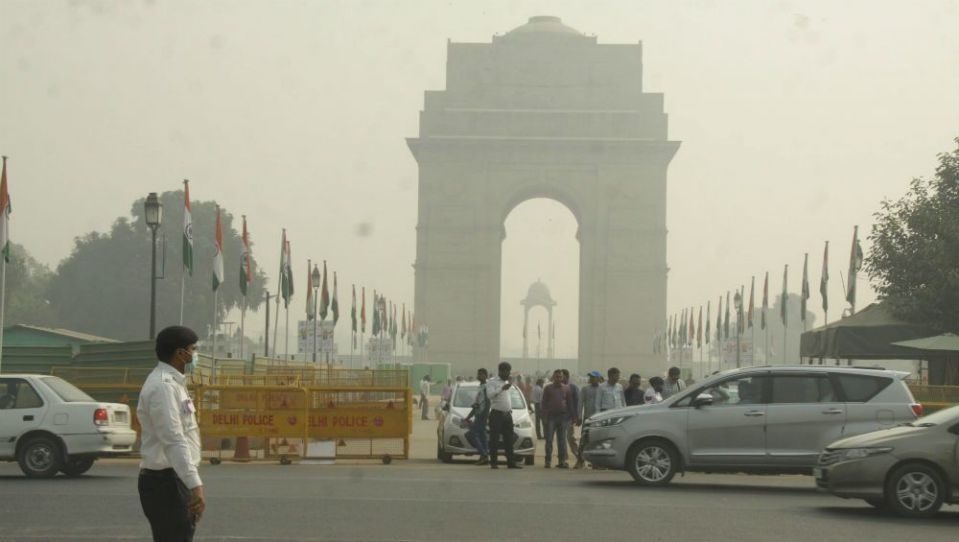 |
| Photo: Yahoo Finance |
The Republic Day parade will start at 9.50 am from Vijay Chowk and proceed towards the National Stadium and tableaux will start from Vijay Chowk and move towards the Red Fort Ground, notes Hindustan Times.
The Delhi Traffic Police have issued an advisory on traffic arrangements and restrictions put in place for the smooth conduct of Republic Day on Tuesday. They have asked people to plan their journeys in advance and avoid the parade and tableaux routes between 4 am and 12.30 pm on Tuesday. The parade will start at 9.50 am from Vijay Chowk and proceed towards the National Stadium and tableaux will start from Vijay Chowk and move towards the Red Fort Ground. The wreath-laying function at National War Memorial will take place at 9 am.
The movement of traffic on certain roads leading to the route of the parade and tableaux will be restricted.
No traffic will be allowed on Vijay Chowk from 6 pm on Monday till the parade is over, it said, adding that Rajpath is already out of bounds. No cross traffic will be allowed on Rajpath intersections from 11 pm on Monday at Rafi Marg, Janpath, Man Singh Road till the parade is over, the advisory said.
Parade and tableaux routes
The parade will start from Vijay Chowk and pass through Rajpath, Amar Jawan Jyoti, India Gate, Princess Palace roundabout, Tilak Marg and Radial Road, and then turn right on "C" Hexagon, turn left again and enter the National Stadium from gate number 1, the advisory said.
The tableaux will start from Vijay Chowk and go towards Red Fort via Rajpath, Amar Jawan Jyoti, India Gate, Princess Palace roundabout, Tilak Marg, Bahadur Shah Zafar Marg and Netaji Subhash Marg, it said.
Closed routes
C-Hexagon-India Gate will be closed for traffic from 5 am on Tuesday till the tableaux cross Tilak Marg. Traffic on Tilak Marg, Bahadur Shah Zafar Marg and Subhash Marg will not be allowed on both the carriageways from 4 am on Tuesday. The cross-traffic will only be allowed depending on the movement of tableaux, the advisory stated.
Alternate routes
The traffic advisory suggested alternate routes which motorists can follow as north-south corridor that includes Ring Road, Ashram Chowk, Sarai Kale Khan, IP Flyover and Rajghat.
Commuters can take the route from Madarsa, Lodhi Road T-point via Aurobindo Marg, AIIMS Chowk, Ring Road-Dhaula Kaun Vande Matram Marg, Shankar Road and Sheikh Mujbur Rahman road for going to Mandir Marg. There is also the east and the west corridors for motorists who have been suggested to take Ring Road via Bhairon Road at Mathura Road and Lodhi Road.
Commuters who want to go towards AIIMS Chowk can take the Ring Road-Dhaula Kaun via Mandir Marg and to go towards Ring Road-ISBT, motorists can take Chadgi Ram Akhara and Mall road via Azadpur. Commuters going to the New Delhi Railway Station from south Delhi can go through Dhaula Kuan, Vande Matram Marg, Panchkuian Road, Connaught Place outer circle, Chelmsford Road for Paharganj side or Minto Road and Bhavbhuti Marg for Ajmeri Gate side.
From east Delhi, they can take Boulevard Road via ISBT bridge, Rani Jhansi flyover, Jhandewalan roundabout, DB Gupta Road, Sheela Cinema Road, Paharganj Bridge and reach New Delhi Railway Station, it said. To travel to Old Delhi Railway Station from south Delhi, people can take Ring Road, Ashram Chowk, Sarai Kale Khan, Rajghat, Chowk Yamuna Bazar, SP Mukherjee Marg, Chhatta Rail and Kauria Bridge, it said.
Bus and Metro services
The movement of bus services will be curtailed at Shivaji Stadium, ISBT Sarai Kale Khan, Kamla Market roundabout, Delhi Secretariat (IGI Stadium), Pragati Maidan (Bhairon Road), Hanuman Mandir (Yamuna Bazar), Mori Gate and ISBT Kashmiri Gate, the advisory said.
| SOME INTERESTING FACTS ABOUT THE CONSTITUTION OF INDIA 1. The Constituent Assembly met for the first time in New Delhi on December 9, 1946, in the Constitution Hall which is now the Central Hall of Parliament House. 2. A drafting committee was appointed for drafting the Constitution of India, with Dr B R Ambedkar as the chairman. 3. The Constituent Assembly took almost three years (two years, eleven months and seventeen days to be precise) to complete its historic task of drafting the Constitution for Independent India. 4. The Constitution was adopted by the Indian Constituent Assembly on 26 November 1949. It came into effect on January 26, 1950. 5. The draft of the constitution was submitted to the Indian Constituent Assembly on November 4, 1947. Over the course of 166 days, which was spread over two years, the 308 members of the Assembly met in sessions that were open to the public and made few updates. 6. Finally, on January 24, 1950, the Assembly members signed two handwritten copies of the Constitution, one in English and one in Hindi. Two days later on January 26th, 1950, history was made. 7. Indian Constitution is the lengthiest written constitution in the world. On the same day, Dr Rajendra Prasad became the first President of the Indian Union. 8. The Constituent Assembly ceased to exist and became the Parliament of India under the transitional provisions of the new Constitution. 9. On January 26, 1929, the Indian National Congress made the famous Declaration of Indian Independence (Purna Swaraj) as opposed to British rule. 10. January 26 is celebrated to commemorate the Indian Constitution replacing the Government of India Act (1935) as the governing document of India. |
|
What is Lunar day today (January 25): In the Chinese Lunar calendar, today is Dec 12 (2020) meaning Gui You Day, Ji Chou Month, Geng ... |
|
National Voters' Day is celebrated on January 25 every year. The significance of National Voters' Day is to encourage more young voters to take part ... |
|
International Holocaust Remembrance Day 2021 is on Wednesday January 27, 2021 with theme “Facing the Aftermath: Recovery and Reconstitution after the Holocaust” |

